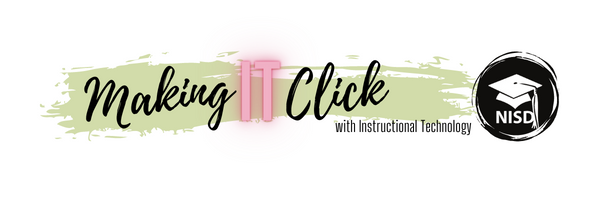Visualize a small group of kids huddled in a middle school flex space, Expo marker in hand and video camera staged in front of them, confidently drawing shapes and lines on the whiteboard as they explain the steps to solve an equation. Picture students, who otherwise avoid math, passionately debating the best place to ask a question: is it before or after an example? Can you hear them, animated, discussing the best way to teach someone about complementary and supplementary angles?
 If you don’t know, EdPuzzle is a video platform that lets teachers turn any video into a lesson by embedding questions, comments, and/or audio. Teachers then assign their video lessons to students and collect formative data, like who watched the video and what they understood. Because the videos are self-paced, students can re-watch them as many times as they need, and even share them with others.
If you don’t know, EdPuzzle is a video platform that lets teachers turn any video into a lesson by embedding questions, comments, and/or audio. Teachers then assign their video lessons to students and collect formative data, like who watched the video and what they understood. Because the videos are self-paced, students can re-watch them as many times as they need, and even share them with others.For this project, in teams of 2-3, students chose a topic from their next unit of study. Before creating their video lessons in EdPuzzle, they explored resources, researched their topics, and planned what comments and questions would best help their audience learn the concepts.
White gave students a choice to either find an existing video or create their own to use in the EdPuzzle. Some were excited to make their own videos using their Chromebooks. Giving choice helped her differentiate for students who needed more time during the ‘discovery phase’ and for those who needed an extra challenge.
 Before publishing and sharing their work with their audience, students gave each other feedback (using Google Forms) about how they could improve their lessons. Mrs. White gave students time to apply the feedback they collected. This step also worked to expose students to all of the terms they needed to know, and to reinforce the concepts they would eventually see in class.
Before publishing and sharing their work with their audience, students gave each other feedback (using Google Forms) about how they could improve their lessons. Mrs. White gave students time to apply the feedback they collected. This step also worked to expose students to all of the terms they needed to know, and to reinforce the concepts they would eventually see in class.In the end, this whole project took 3-4 days, provided a whole department with student-created peer tutorial resources, and gave students the chance to learn with a purpose. You can see examples of student work here: Example 1 & Example 2
It is hard to imagine what authentic learning looks like in practice because there isn’t a ‘single right way’ to approach it. John Lamar, with bie.org, put it simply, “In fully authentic work, students are doing work that is real to them... [it has] a direct impact on or use in the real world. (The “real world,” by the way, could still be school, which is a very real place for students.)”
 It’s easy to get caught up in preparing kids for the future, but don’t forget: to our students, the real world is here and now. The real world is in your classroom as much as it is outside of it.
It’s easy to get caught up in preparing kids for the future, but don’t forget: to our students, the real world is here and now. The real world is in your classroom as much as it is outside of it.One of Mrs. White's biggest takeaways from this project was that students owned their learning throughout the entire process. That happened because she gave students a purpose and audience for their learning. Students were proud to contribute to their immediate environment and motivated knowing that other people would see and benefit from their work.
Ultimately, when educators design authentic learning opportunities they empower students in the present. Instead of hoping students will become leaders, creators, and good citizens one day, teachers can give students the chance to be those people today, to contribute to their real world in the here and now.



No comments:
Post a Comment
Note: Only a member of this blog may post a comment.